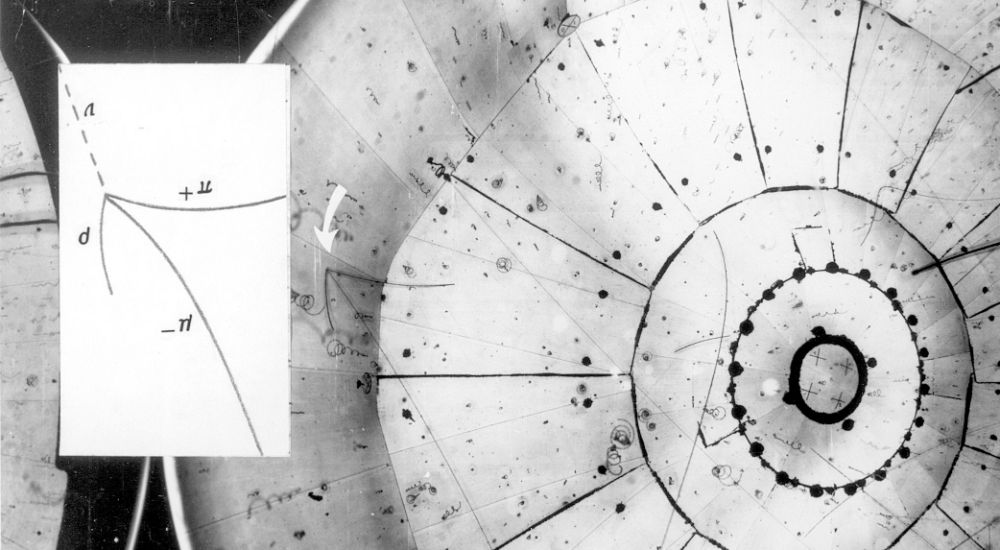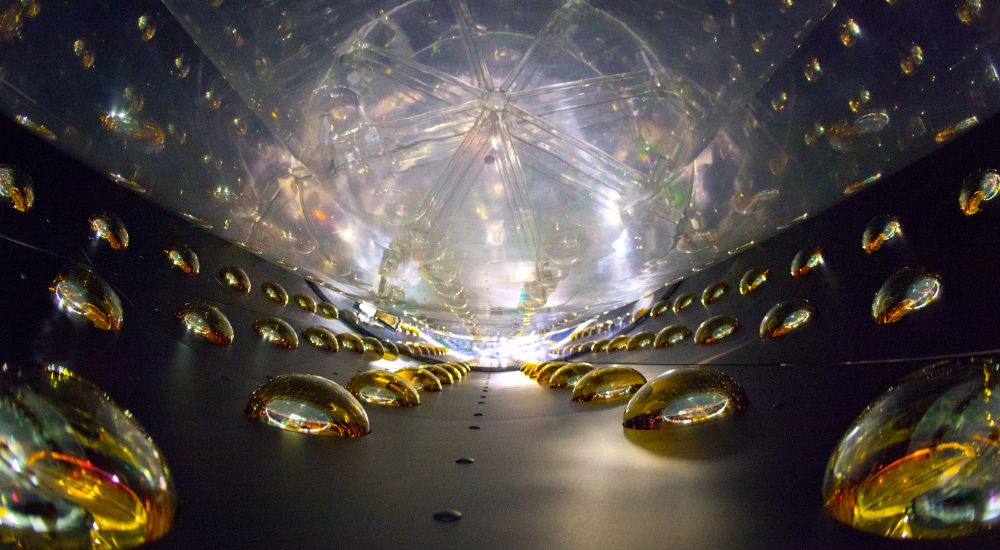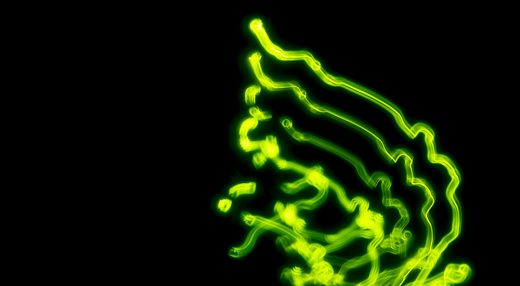How Are Neutrinos Formed and Detected?

Neutrino Event – The first photograph of a neutrino interacting with a proton in a hydrogen bubble chamber to create muon and pi meson.
Neutrinos hold a special spotlight in the world of particle physics for being the most elusive particle. And as you read this, there are neutrinos, billions of it, passing through you. Some would have been formed in the sun, and some from a supernova far away, and some even from the earth’s core. What makes neutrinos elusive is that they do not interact with you or any physical matter as they permeate.
In this revised and updated Geekswipe edition on neutrinos, we will learn the fundamental nature of neutrinos, explore how they are formed, and find out how we can detect them.
Neutrinos — a crash course
Neutrinos, in a nutshell, are very tiny particles, a fundamental one, with no charge or mass (almost zero), traversing the universe at speeds closer to the speed of light. Being a neutral and massless particle, the neutrinos do not interact electromagnetically, gravitationally, or even with the strong interaction. And this is why it is hard to detect them, unlike other particles that would electrically interact with matters, say, a sensor.
However, neutrinos do interact through the weak interaction—one of the four fundamental interactions that are responsible for the decay of subatomic particles—and with extreme gravity. And as a matter of fact, historically, beta decay is how the idea of neutrino was hypothesised.
How were neutrinos discovered?
Before the discovery of neutrinos, the basic understanding of beta decay was that a neutron would decay into a proton, emitting an electron.
n0 → p+ + e–
But, Pauli Wolfgang, upon studying the beta decay of carbon to nitrogen, found that the angular momentum before and after the decay wasn’t conserved. So Pauli postulated that the logical explanation is that an extra particle was released along with the electron.
n0 → p+ + e– + νe0
And it was observed that the energy was not conserved as well, and it was apparent that there was indeed another particle emitted—a small neutral particle, a neutrino. Then in the late 1950s, the Cowan–Reines neutrino experiment finally proved neutrino’s existence by observing the interaction of antineutrinos from a nuclear reactor with the protons.
How neutrinos form?
A neutrino can be formed by any weak interaction that occurs in the universe.
- In a huge cosmic event like a supernova.
- A nuclear reaction at the core of a star like our sun.
- Beta decay.
- Atmospheric interaction of cosmic rays with the atoms.
Neutrino flavours
Neutrinos, like electrons, are leptons. When a neutrino is emitted from a weak reaction, it is identified based on the particle that decays, which would be any of the three known lepton flavours (electron, muon, tau). For example, if an electron is released in beta plus decay, the emitted neutrino would be an electron neutrino. But some particle decays create other flavours as well.
Formation of electron neutrino – β+ decay
Beta plus decay (electron capture) is when a proton in an unstable nucleus decays to a neutron via the weak interaction by interacting with an electron. During the process, the proton decays to a neutron, emitting a positron and an electron neutrino.
p+ + e– → n0 + e++ νe
Formation of muon neutrino – μ decay
Muon, a lepton like an electron, is unstable and mostly decays into an electron or a positron with a neutrino-antineutrino pair. One of the particles formed in the decay process will be a muon neutrino or muon antineutrino. The other one could be an electron antineutrino or an electron neutrino respectively.
μ– → e– + νe + νμ
or
μ+ → e+ + νe + νμ
Formation of tau neutrino – τ decay
Tau, the heaviest lepton, is unstable as well. But unlike Muon, Tau decays into a pi meson (a hadron) and a tau neutrino.
How are neutrinos detected?
As the neutrinos do not interact electromagnetically or gravitationally (within practical limits), it is impossible for any physical detectors to pick it up, as they’d just pass through it unfazed. But what can be observed are the effects of its interaction with the weak force.
Neutron–neutrino interaction
If a neutrino interacts with the nucleus of an atom by the weak interaction it creates an observable effect that can be recorded. For example, when a high energy neutrino (e.g. solar neutrino) hits a neutron of an atom, it interacts and decays to proton and an electron.
n0 + νe → p+ + e–
And if this happens inside a heavy water medium or ice, the high energy electrons emitted would, in turn, radiate photons (spontaneous emission) stacked up like how air molecules stack up on a supersonic aircraft (sonic boom) and create an optical boom called the Cherenkov radiation. Thus by detecting this radiation, the interaction of neutrinos can be detected.
Cherenkov detectors are the most common type, and to avoid cosmic rays and background radiation interfering, they are usually built underground. Super-Kamiokande is one such neutrino detector.

Photomultiplier tubes at the Daya Bay Multinational Neutrino Detector.
An interesting observation to note is that the neutrinos are found to oscillate between their three lepton flavours when detected, exhibiting the phenomenon known as the neutrino oscillation. Which means the detected flavour doesn’t really say much about the actual flavour of the neutrino when it originated from the source. However, in experiments on neutrino oscillations, the neutrinos are created locally with their flavours identified and the oscillations between the source and the detectors are studied.
This post was first published on February 27, 2020.











Hello Karthikeyan, I stumbled upon your writing on neutrinos as I was researching on the subject. I would love to connect with you on the subject of neutrinos and the magnetic monopole, which are very very important aspects of our existence. Based on the work I am involved with, the Human Design System, these are components that extremely significant and play an important role in our future. I am working on a project that is intended to help young people understand themselves and their true existence, and for some odd reason you and your academic and experiential background could be a good ally in utilizing technology to manifest a simple format for the younger generation (and some mature ones) to learn about themselves in a way it’s never been taught before. If you’re interested to learn more, it would be my honor to discuss it with you. Cheers!
Thank you very much. It is very fascinating to learn about Neutrino.